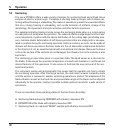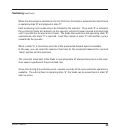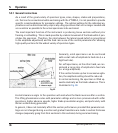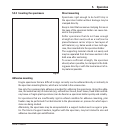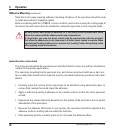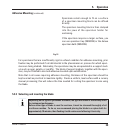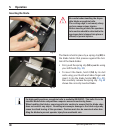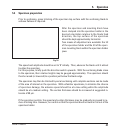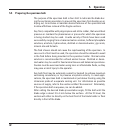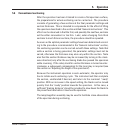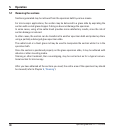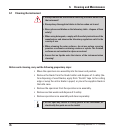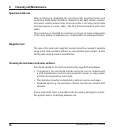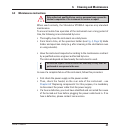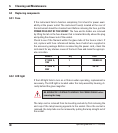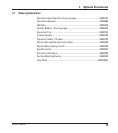
42
Operating Manual V 1.1 – 01/2010
5.5 Preparing the specimen bath
The purpose of the specimen bath is four-fold: to lubricate the blade dur-
ing the sectioning operation, to prevent the specimen from heating up or
drying out, to increase or maintain desired features of the specimen and
to allow effortless removal of the fragile sections.
Any fluid, compatible with polyproylene and nitrile rubber, that would best
preserve or maintain the phenomenon or process for which the specimen
is being studied may be used. A wide variety of fluids have been used
successfully ranging from a balanced saline solution, buffered phosphate
solutions, alcohols, hydrocarbon, distilled or deionized water, glycerols,
mineral oils and formalin.
The fluid chosen should not cause the rapid swelling of the specimen. In
case such a fluid must be used, the specimen should be allowed to swell
in the fluid before being mounted in the specimen holder. Normal saline
solution is recommended for unfixed animal tissue. Distilled or deion-
ized water may be used for fixed animal tissues and botanical specimens.
Caution must be exercised when using toxic or inflammable fluids, as they
may pose a risk of injury to the operator.
Any bath fluid may be externally cooled (or heated) to achieve maximum
sectioning consistency or to preserve enzymatic activity. In most appli-
cations, the specimen bath is maintained at just above freezing using the
immersion probe of a separate cooling unit. For information on possible
sources of supply, refer to the section entitled "Accessories". Alternately,
if the specimen bath is aqueous, ice can be added.
After setting the desired blade presentation angle, fill the bath until the
blade edge is about 3 to 4 mm below the surface. At this fill level, the
section will either lie directly on the bent front of the blade holder or float
directly in front of the blade.
5. Operation



